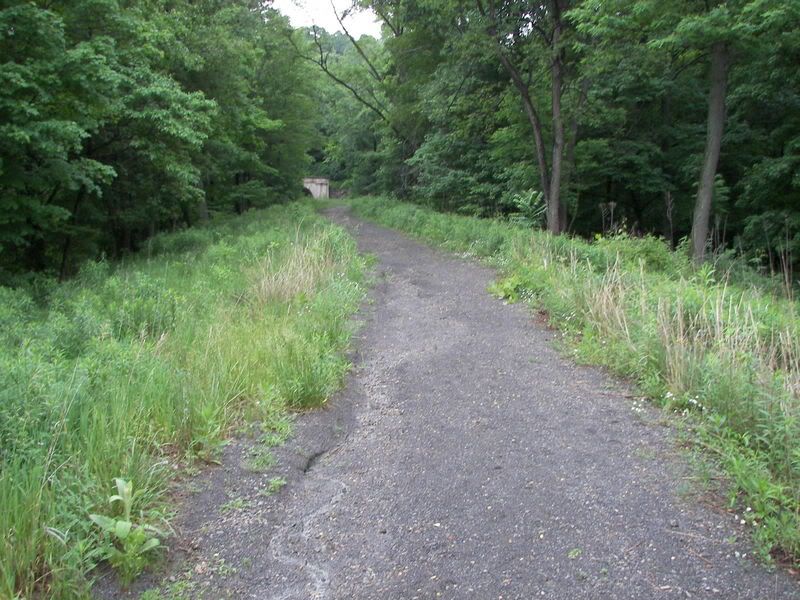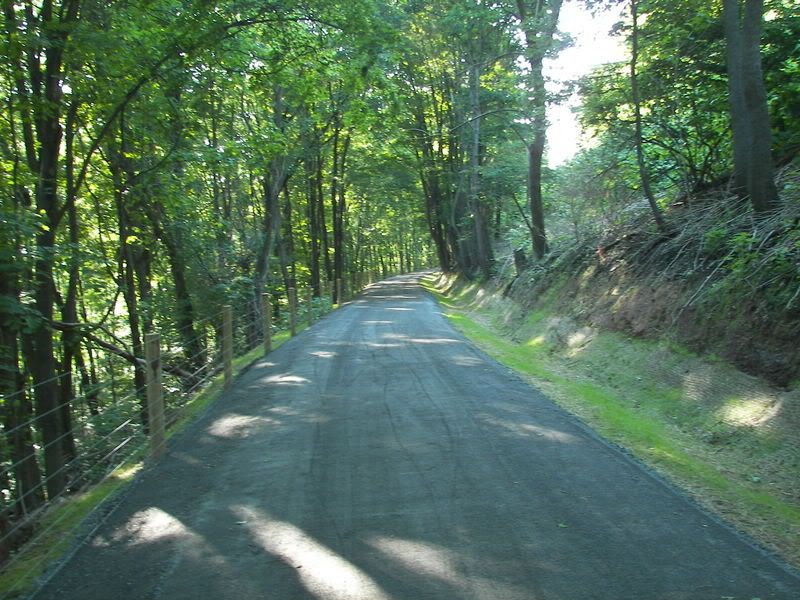Bicycling
In reply to the discussion: Recumbent bikes vs upright [View all]happyslug
(14,779 posts)Most Rails to Trails Bike Trails are under 3 % Grade (Three feet rise for every 100 feet traveled) and thus no big difference on such trails. If you are going on roads in hilly country, the Upright is the clear choice for it is easier to go up hill on an upright then a recumbent. In hill country what an upright loses to a recumbent on the flats and going down hill, is more then made up going uphills. Remember the greatest loss in speed (and expenditures in energy) is in climbing hills. Thus what you gain going downhill and on the flats with a recumbent, is much less then what recumbents lose to Uprights going UPHILL.
If you plan to stay on the Rails to Trails, recumbents are on supreme, for even in hilly country railroads rarely go over 5% grade (Never if the line was ever steam, but on abandoned Streetcars right of way, 6-10% grades are possible).
When I go on the "Path of the Flood Path" I have to go up a 25% grade on road to the Path ( I Walk my upright up that grade) . I then go on a almost flat section with only a gentle curve, then downhill to Incline #1 of the old Pennsylvania Canal (1836-1854).
http://www.pecpa.org/sites/pecpa.org/files/downloads/Path_of_Flood_Final_Brochure.pdf
Incline #1 is on a 25% grade, I walk my upright going up that grade:

After the incline, you enter the Staple bend tunnel and its is almost 0% grade, followed by two miles on the old Portage railway bed, again on less the 1% grade. Then you go under the present mainline railroad and go through the little town of Mineral point then up a 15% grade to the road bed of the 1912-1927 Southern Cambria Railway (Nick Name, "The Dread of the Timid traveler"![]() .
.
The Grade up to the actual Road bed:

Once on the actual Southern Cambria rail-bed the grade varies from 5-10% with many curves. This is because Steam locomotives NEVER traveled on the Southern Cambria, it was electric driven only and electric drive could be used on steeper grades and tighter curves then Steam. On an upright, once on the Southern Cambria road bed it is doable. In the grade up to it, it is marginal for someone on a bike (you are better walking the bike to get to the trail).


As a rule, how the Path of the Flood trail in Johnstown PA is forming up, it tends to have to many grades for a recumbent, but it is alright for an upright.
I have some concerns as to Recumbent given most are quite low and Auto Drivers may NOT see them as vehicles (Many drivers have problems seeing MOTORCYCLES, let alone bicycles and recumbent are even more strange). Auto Drivers have a tendency to look for other AUTOS, missing motor cycles and conventional bicyclists in the process. I suspect recumbent would be a worse choice in that regard.
For a beginner or someone returning to biking I would opt for an upright, most are cheaper with similar components. One reason for this is Recumbent are illegal for most bicycle racing and thus not used in racing and thus not supported by most bicycle makers (who tend to see racing as a way to advertise their bicycle).
Remember this fact, the most important and expensive part of a bicycle is its frame. The better the frame the easier it will be to peddle. Components also help, but not as much as the frame and can be replaced,
20 years ago, Cannondale had a project where you could buy just the frame from Cannondale and use whatever you had at home on it. I did that and used junk components on it but then slowly replaced them as I had more money,. I notice the improvement in components made my biking easier but not as much as the switch from an old High Tension Steel Frame (the Wonder Material of 1900) to an aluminum frame (When I Upgraded to XT Shimano gearing, I was shock to find gearing that actually changed when I moved the lever to change gears, as opposed to my previous bikes when that change would take a few minutes).
The big improvement in biking is when you move up from a High Tension Steel Frame bicycle (The wonder material of 1900, had the Titanic been made of it, it would have survived the Ice berg) and Chrome Moly Frames (the wonder Material of the 1930s). Aluminum, then Titanium and now Carbon Fiber are even "Stiffer" Frames (The Stiffer the frame the easy it is to bike), but none of them are the big jump from High Tension to Chrome Moly Frame. Thus you will see all four materials being used in high end bikes (With Titanium disappearing over the last 10 years, but holding its own when it comes to components).
I ride an Aluminum and a Chrome Moly Frame bikes. The Chrome Moly is a "Racer" Style bike, the Aluminum a "Mountain" style bike, but both are about the same in Bikability.
Make sure you get a bike frame that fits you. Since you are getting "back" into biking, make sure you have a bike you WANT and can use, not something someone else tells you to buy.
My Recommendation for a new biker is to go with 700 cc "hybrid" bike with 35mm tires. It is good enough for roads and bike trails and can be use off road. If you are short go with the 24 inch frame or a 26 inch frame with 1 1/2 inch tires (if you can find them). Most mountain bikes are 26 inch based frames. The larger frame with the larger 700cc wheels makes it a better over all bike. Through presently I am riding a 26 inch frame AND a 27 inch frame (27 inch was last used by Schwinn in the 1970s, slightly larger then the 700 cc, but to my knowledge no frames are made for 27 inch wheels today, through some people call the 700 cc 27 inch).
ISO, International Standard Organizations have adopted a system of bike sizes, but no one uses them for marketing, for a 700 cc wheel sounds better then a 622, a 26 inch wheel sounds better then a 599 wheel:
Popular sizes and their ISO names:
700cc is also called a 622 wheel (622 is the actual measurement of the Wheel not the nominal tire on that wheel).
26 inch is also called a 599 wheel
27 inch is also call a 630 wheel
More on Tires:
http://sheldonbrown.com/tire-sizing.html
Here is Sheldon Brown on Recumbents:
http://sheldonbrown.com/recumbents.html